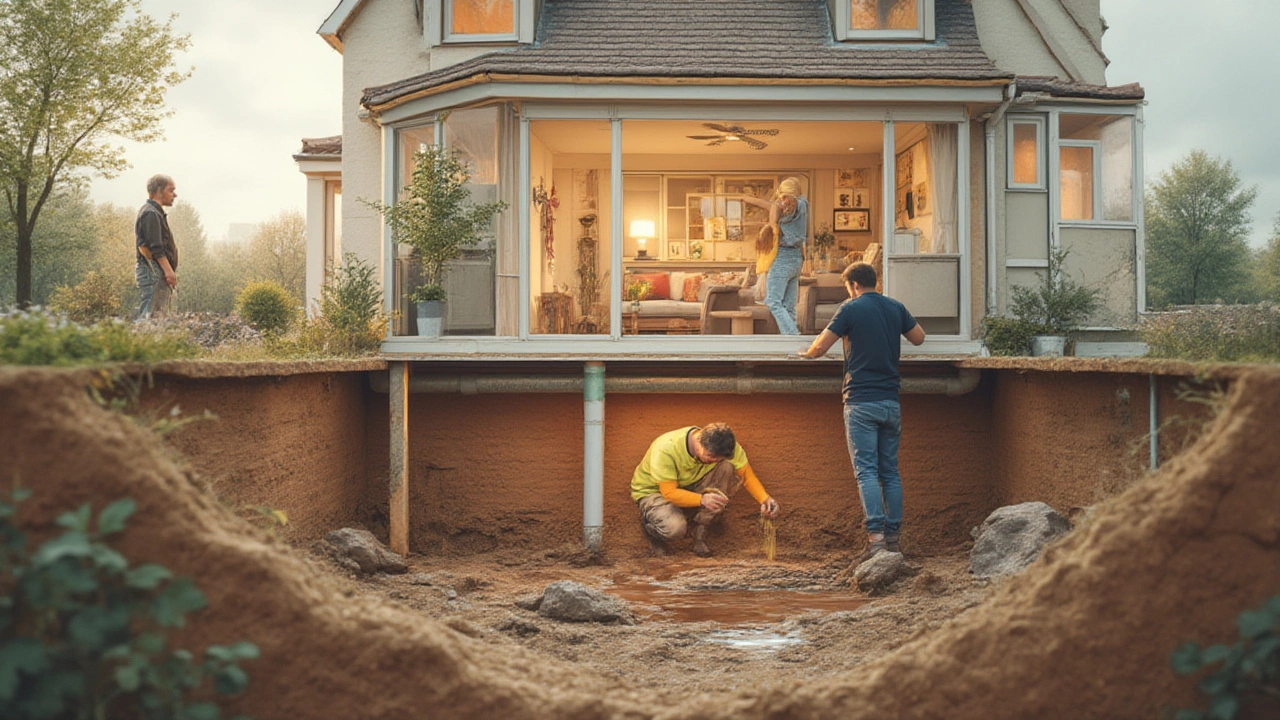Find out if your homeowners insurance covers broken pipes under your foundation, learn the facts, expert tips, and what to do if disaster strikes.
Broken Pipes Under Foundation: Spot, Repair & Prevent
If you’ve ever noticed damp spots on your floor, a musty smell in the basement, or sudden drops in water pressure, a hidden pipe break might be the culprit. When a pipe bursts beneath your foundation, the damage can spread fast – think cracked walls, mold growth, and even structural shifts. The good news? With a few simple checks you can catch the problem early and limit the repair bill.
How to Identify a Hidden Pipe Leak
First, look for tell‑tale signs. Cool, wet patches on concrete floors, unexplained puddles, or rust stains on walls all point to water finding its way up. Listen for a faint hissing or gurgling sound in the walls; even a low‑volume drip can be heard with a stethoscope or a simple piece of tubing pressed against the surface.
Don’t forget the outdoor clues. If you see soggy soil or a grass patch that stays greener than the rest, a pipe could be feeding it. In cold weather, frozen ground that thaws unevenly may also hide a leak. Finally, check your water bill. A sudden jump without extra usage usually signals a hidden loss.
Repair Options and Costs
Once you’ve confirmed a leak, you have a few routes. The quickest fix is a pipe lining or epoxy coating, which involves inserting a resin‑filled tube that hardens inside the pipe. This method avoids major excavation and can cost between £1,200 – £2,500 for a typical basement run.
If the damage is extensive, you may need to excavate and replace the pipe entirely. Digging up the foundation is pricey – expect £3,500 – £7,000 depending on pipe size and access difficulty. Some homeowners opt for a trenchless repair, using a small bore to pull a new pipe through the old route; it’s less invasive but can still run £2,500 – £4,500.
Don’t overlook insurance. Most standard home policies cover sudden, accidental pipe bursts but often exclude gradual leaks caused by wear. Read the fine print, and consider adding a specific water‑damage rider if you live in an older home with aging plumbing.
Preventing future breaks is easier than fixing them. Install a pressure regulator to avoid high‑pressure surges, and schedule a yearly plumbing inspection. Replace any corroded fittings before they give way, and keep the soil around your foundation well‑drained to reduce stress on underground pipes.
In short, spotting a broken pipe under your foundation early can save you from costly structural repairs and health hazards. Keep an eye on moisture patterns, listen for odd sounds, and act fast when you suspect a leak. With the right repair method and a bit of preventive maintenance, your home stays dry, safe, and solid for years to come.
